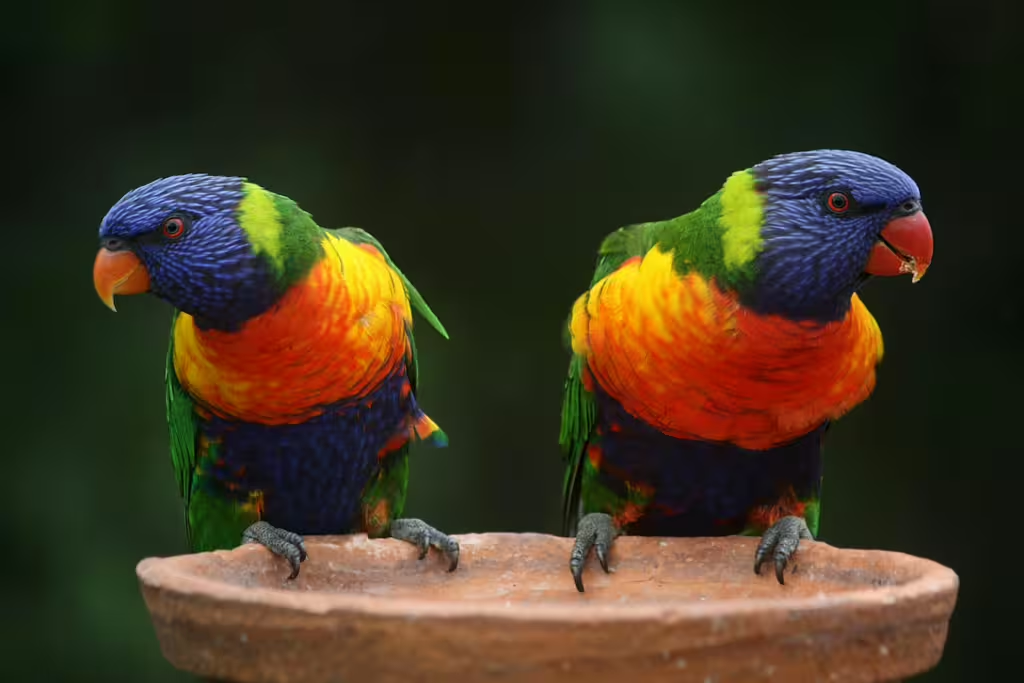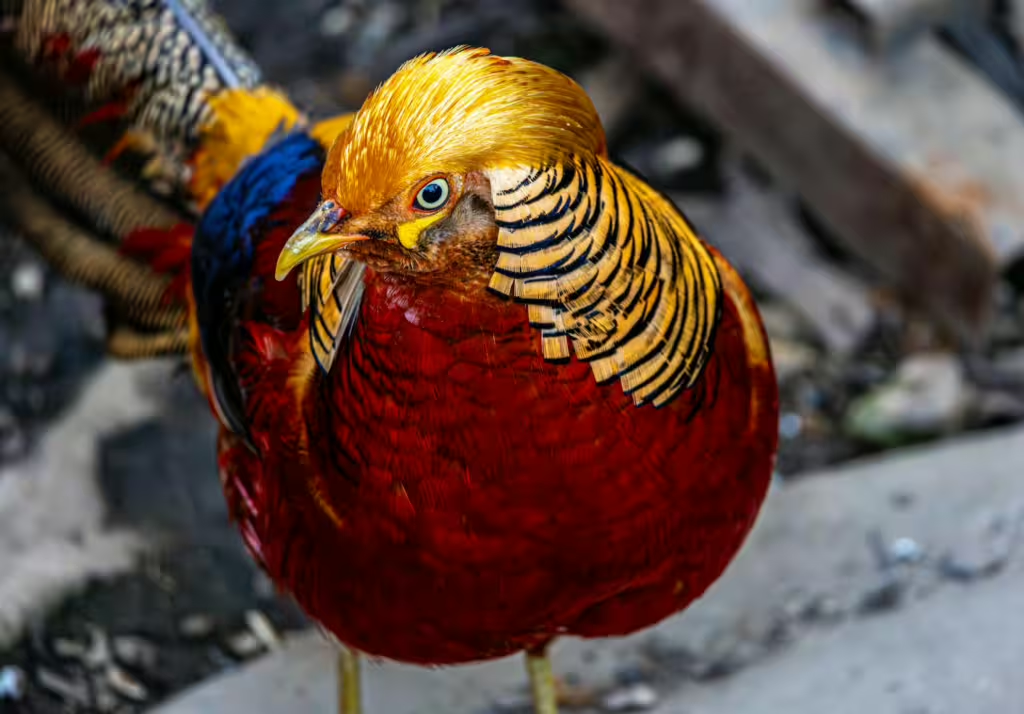The flash of color that we see when a bird flits across our field of vision can draw one’s attention like few other creatures in nature. Smaller birds might appear as a shimmer of blue, a flash of red, or a glint of emerald green, but larger ones may be a veritable riot of colorful beaks and feathers. Still others take their brilliant colorations to new levels, adding fantastical feathers to the equation in the form of magnificent plumed tails, crests, or patterns.
Whether they are as large as a swaggering peacock or as tiny as a timid hummingbird, the avian denizens of our world clothe themselves in the most spectacular colors in all of the animal kingdom. Students of zoology will no doubt understand something about why these colors exist in nature. We know that animals tend toward the colorful when they need to deter predators, attract mates, or blend into their environment; and the same is mostly true for birds. Though, the circumstances for one bird are vastly different than that of that of the next.
In this article, we will go into the science of coloration as it pertains to birds. We will discuss how these colors form, why they are so brilliant, and how they help a bird to survive and thrive within the natural ecosystems. So let us journey together through forest, field, hill, and dale, to appreciate the beauty bevy of colors that exists in the avian world.

Magical, Colorful Feathers
Feathers are one of the most remarkable evolutionary adaptations in existence. Whether penguin or pigeon, eery bird has feathers, and they are an essential part of how birds keep warm, fly, and mate. Made from the same material as our fingernails, feathers are a marvel of evolutionary engineering and they come in many different shapes and sizes. Some are for flying or gliding, others for steering or waterproofing, and down feathers for insulation. But the shapes of feathers isn’t what interests us today; its the coloration. And weather a bird shines and sparkles or blends into their environment, the colors of a bird’s feathers tell a great deal about that bird’s ecology and behavior.
The Science of Color: Pigments and Structure
The colors in bird feathers come from a combination of natural pigment and physical structure. The former of these are natural chemicals that absorb certain wavelengths of light, though some pigments do reflect light. The main three pigments in bird feathers are melanins, pophyrins, and carotenoids; and most of these come from the food a bird consumes.
Structural colors, meanwhile, are derived from microscopic structures in the feathers themselves. The shimmery iridescence of a hummingbird and even the bright blue of a blue jay are the result of these different structures, and each one bends light in such a way as to make these distinctive colors. Those colors may shift depending on light, feather position, and such, but they are the reason for many avian colorations.
Beauty as a Signal
If we’re talking about bird colorations, the obvious leader of the flock has got to be the peacock. We are speaking specifically of the male Indian peafowl, not the female or the chicks, which both have rather drab coloration by comparison. When a peacock fans out his enormous tail, he creates one of the most spectacular displays in all of nature, and the illusion he creates in this way is the result of those same nanostructures we mentioned in the section above. The eyespots on the wings reflect light and shimmer, creating a mesmerizing three-dimensional pattern that peahens simply cannot resist.
Thus, as one might expect peacocks have feathers especially for mating, and the largest, most symmetrical, most impressive feathers are an indication of a strong, healthy mating partner. The bigger and brighter the display, the more likely a peahen will be to choose that particular peacock. Other birds use feather coloration for courting too, incidentally, a great deal of them, in fact.
Communicative Coloration
Now, we should be clear, feathers are not only for admiration. Many birds use their colored plumage as tools for communication. And sure, many birds use their colors to signal and attract mates, but just as many use them to defend their progeny and territories, or to warn off rivals. It should come as no surprise that birds are at their most colorful during the mating season.
As it happens, many birds even molt their drab plumage at breeding time and reveal a more colorful undercoat of feathers. One such example is the male American goldfinch, who turn from dull olive to bright yellow at mating season. When the season ends, they molt back to olive, a color that is far more conducive to camouflage.
Other birds use color as a warning to other animals. Take the poisonous pitohui of New Guinea, a bird whose orange and black predators are a clear indication that “this animal is toxic.” Incidentally, the pitohui is one of the world’s only toxic birds.
Flying Rainbows
Next on our list are hummingbirds, whose feathers are also the result of nanostructures rather than pigmentation. These living gems are capable of wingbeats that are all-but-invisible to the naked eye. In fact, they can beat them up to 80 times per second. If peacocks are masters of large-scale structural color, hummingbirds are miniature marvels! The microscopic platelets in their feathers are made of keratin and air, which bounce about when sunlight hits it and creates brilliant, riotous bursts of glimmering colors.
Why do they have these colors? Well, it’s sort of a signal and a weapon all at once. The shimmering throats (gorgets) of male hummingbirds are meant to warn away rivals and protect their territory, They do this because — as specialized feeders that only eat plant nectar — they need to defend their feeding spots. In addition, a brightly-colored male hummingbird male can easily get a female’s attention; if the sunlight hits them the right way!

Camouflage Colors
Finally, we come to the other reason for colored feathers; camouflage. The birds with bright colors are meant to stand out from their environment and draw the attention of mates and rivals, but there ar many birds who opt to blend in so that they can remain safe from predators. Though, in some cases, camouflage is used to help predatory birds sneak up on unwary prey.
Take the nightjar, for instance. These curious birds have mottled brown and gray feathers that perfectly match tree bark or leaf litter. During the day, the cautious little critters rest motionless on the ground, nearly invisible to other animals, only coming out to feed at night. Owls, on the other hand, use their dark coloration to hide in plain sight until they can swoop down to catch prey with nary an indication of their predatory presence.
Some birds, like the Arctic-dwelling ptarmigan, changes colors with the seasons. These birds are brown in summer to match the landscape, and pure white in winter, to disappear with the snow. In the ptarmigan’s case, it’s easy to see how the changes in feather pigment can be used to protect them from the determined predators of the Arctic Tundra.

True Investigator Says…
As you can see, when it comes to birds, color and even the lack thereof, can tell a story of survival. Peacocks, hummingbirds, ptarmigans, parrots, and thousands of other distinctive species use their colors to express themselves, stand out, communicate to others, or provide protection. Each hue that exists in nature carries special meaning for our avian neighbors and though the science of color is what determines how we see them, they are more than just a byproduct of physics.
Evolution has made it so that the only living relatives of arguably the most awe-inspiring creatures to have ever walked this planet, remain as majestic and as magnificent as their forebears must have been. The next time you see a vermillion canary, warbling in a nearby tree, take a moment to appreciate them. Whether by flight, behavior, or simply coloration, the living rainbows that are birds remind us that nature’s palette is as boundless and beautiful as all the colors of the rainbow.
Discover more from TrueInvestigator
Subscribe to get the latest posts sent to your email.

